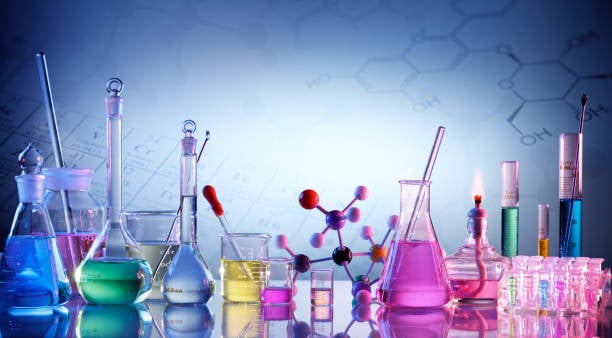Access CBSE Class 10 Science NCERT Solutions for Chapter 1, Chemical Reactions and Equations. Explanations to help you master key concepts!
About the Chapter
The first chapter of the Class 10 Science NCERT book, titled “Chemical Reactions and Equations,” introduces students to the fundamental concepts of chemistry. This chapter lays the foundation for understanding how substances interact, change, and form new substances through chemical reactions. To help students grasp these essential ideas, CBSE provides NCERT solutions that break down complex problems into simpler, step-by-step explanations.
In this blog post, we’ll explore the key topics covered in Chapter 1, highlight the importance of NCERT solutions, and provide an overview of how they can enhance your understanding and exam preparation.

Key Topics Covered in Chapter 1
- Chemical Reactions:
The chapter begins by explaining what chemical reactions are and how to identify them. You’ll learn to differentiate between physical and chemical changes, and identify signs like color change, gas formation, or temperature change that indicate a chemical reaction. - Balancing Chemical Equations:
One of the most important skills in chemistry is balancing chemical equations. Chapter 1 guides students through this process, ensuring they understand the law of conservation of mass. NCERT solutions simplify this concept by showing detailed steps to balance equations. - Types of Chemical Reactions:
The chapter explores different types of chemical reactions, including: Combination reactions, Decomposition reactions, Displacement reactions, Double displacement reactions, Oxidation and reduction reactions (Redox reactions), Corrosion and Rancidity.
NCERT Exercise Questions and Solutions
Question 1: Why should a magnesium ribbon be cleaned before burning in air?
Answer:
Magnesium ribbon must be cleaned before burning in air because it develops a thin layer of magnesium oxide (MgO) on its surface due to its reaction with the oxygen in the air. This oxide layer prevents magnesium from burning easily, so it must be removed to get a fresh surface of magnesium for proper combustion.
Question 2: Write the balanced equation for the following chemical reactions.
- Hydrogen + Chlorine → Hydrogen chloride
- Barium chloride + Aluminium sulphate → Barium sulphate + Aluminium chloride
- Sodium + Water → Sodium hydroxide + Hydrogen
Answer:
- ( H2 + Cl2 → 2HCl )
- ( 3BaCl2 + Al2(SO4)3 → 3BaSO4 + 2AlCl3 )
- ( 2Na + 2H2O → 2NaOH + H2 )
Question 3: Write a balanced chemical equation with state symbols for the following reactions.
- Solution of barium chloride and sodium sulphate in water react to give insoluble barium sulphate and the solution of sodium chloride.
- Sodium hydroxide solution in water reacts with hydrochloric acid to produce sodium chloride solution and water.
Answer:
- ( BaCl2 (aq) + Na2SO4 (aq) → BaSO4 (s) + 2NaCl (aq) )
- ( NaOH (aq) + HCl (aq) → NaCl (aq) + H2O (l) )
Question 4: A solution of a substance ‘X’ is used for whitewashing.
(a) Name the substance ‘X’ and write its formula.
(b) Write the reaction of the substance ‘X’ with water.**
Answer:
(a) The substance ‘X’ is calcium oxide (quicklime), and its formula is CaO.
(b) The reaction of calcium oxide with water is:
[ CaO + H2O → Ca(OH)2 ]
(Quicklime reacts with water to form calcium hydroxide, which is used for whitewashing.)
Question 5: Why is the amount of gas collected in one of the test tubes in Activity 1.7 (electrolysis of water) double that of the other? Name this gas.
Answer:
In the electrolysis of water, water is broken down into hydrogen and oxygen gas. The volume of hydrogen gas collected is double the volume of oxygen gas because water ( H2O ) contains two hydrogen atoms for every one oxygen atom. Therefore, for every molecule of oxygen produced, two molecules of hydrogen are produced. The gas collected in larger quantity is hydrogen.
Question 6: Why does the colour of copper sulphate solution change when an iron nail is dipped in it?
Answer:
When an iron nail is dipped in copper sulphate ( CuSO_4 )solution, iron displaces copper from the solution because iron is more reactive than copper. As a result, copper is deposited on the iron nail and the solution becomes pale green due to the formation of iron sulphate ( FeSO4 ).
The chemical reaction is:
[ Fe (s) + CuSO4 (aq) → FeSO4 (aq) + Cu (s) ]
Question 7: Identify the type of reaction in the following:
- ( Zn + H2SO4 → ZnSO4 + H2 )
- ( 2HgO → 2Hg + O2 )
- ( CuSO4 + Fe → FeSO4 + Cu )
- ( BaCl2 + Na2SO4 → BaSO4 + 2NaCl )
Answer:
- Displacement Reaction
- Decomposition Reaction
- Displacement Reaction
- Double Displacement Reaction
Question 8: What is a redox reaction? Give an example.
Answer:
A redox reaction is a reaction in which both oxidation and reduction take place simultaneously.
- Oxidation refers to the loss of electrons or gain of oxygen.
- Reduction refers to the gain of electrons or loss of oxygen.
Example:
[ ZnO + C → Zn + CO ]
In this reaction, zinc oxide (ZnO) is reduced to zinc (Zn) (loss of oxygen), and carbon (C) is oxidized to carbon monoxide (CO) (gain of oxygen).
Question 9: Why do we apply paint on iron articles?
Answer:
We apply paint on iron articles to prevent rusting. Paint acts as a protective layer, preventing the iron from coming into direct contact with moisture and oxygen in the air, which are necessary for the rusting process.
Question 10: Oil and fat-containing food items are flushed with nitrogen. Why?
Answer:
Oil and fat-containing food items are flushed with nitrogen to prevent them from becoming rancid. Nitrogen is an inert gas and does not react with oils and fats, thus preventing their oxidation. This slows down the process of rancidity, which occurs when fats react with oxygen and spoil the food.
Question 11: Explain the following terms with one example each.
(a) Corrosion
(b) Rancidity
Answer:
(a) Corrosion: It is the process in which metals are gradually eaten away by the action of air, moisture, or chemicals. Example: Rusting of iron.
[ 4Fe + 3O2 + 6H2O → 4Fe(OH)3 ]
(b) Rancidity: It refers to the spoilage of food containing fats and oils due to oxidation, which results in unpleasant odor and taste. Example: Spoilage of potato chips when exposed to air.










